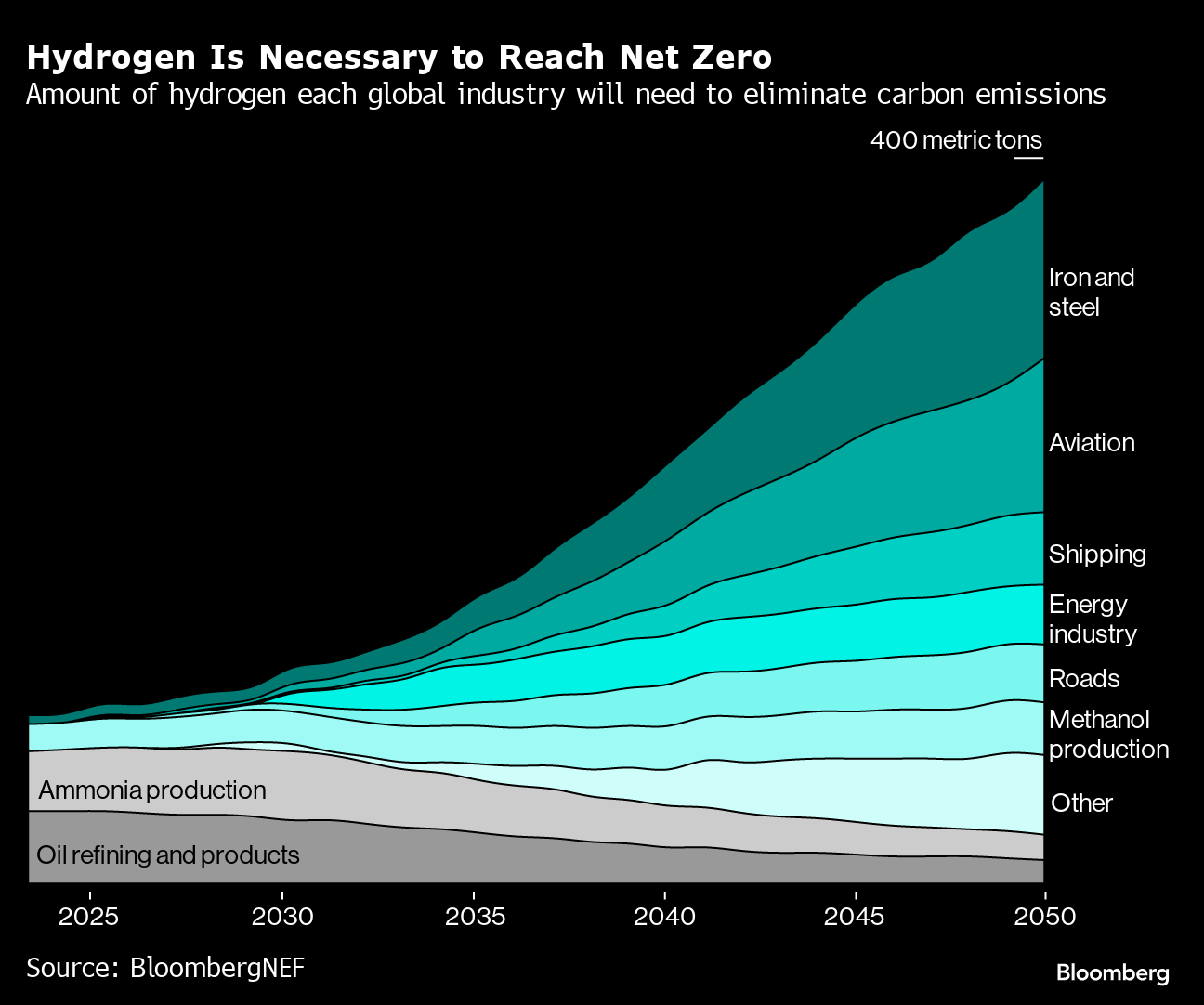Australia Sees Hydrogen Exports by 2030 in $5 Billion Plan
(Bloomberg) -- Australia, one of the world’s biggest natural gas exporters, expects to start shipping green hydrogen abroad by the end of this decade, seeking to spur sluggish progress in a global trade for the low-emissions fuel.
Government incentives of about A$8 billion ($5.4 billion) over the next decade are expected to unlock A$50 billion in private investment, according to an updated National Hydrogen Strategy released Friday. That would allow annual production of at least 500,000 tons of hydrogen made with renewable energy and minimum exports of 200,000 tons by 2030.
Australia has sought to kick-start the production of green hydrogen — seen as key to cutting emissions in energy-intensive industries such as steelmaking. While its vast open spaces give it a geographical advantage to build the solar farms and wind turbines needed to power the electrolyzers, BloombergNEF expects the US, Europe and China to account for 80% of supply by 2030.

“Hydrogen will play an important complementary role to electrification by opening net zero pathways for hard-to-abate industries,” Energy Minister Chris Bowen said. “By using our world-leading renewable energy resources to make renewable hydrogen, we can deliver new domestic manufacturing opportunities such as green metals and chemicals, low carbon liquid fuels, and energy exports to our international partners.”
Still, the country has struggled to develop a green hydrogen sector. Billionaire Andrew Forrest — the founder of iron ore miner Fortescue Ltd. and one of the fuel’s biggest advocates — in July put on hold a target to produce 15 million tons a year by 2030, citing high energy prices.
Demand is also lagging. Only about 12% of production capacity planned to be commissioned by the end of the decade currently has an identified offtaker, and just a small percentage of those deals are binding, BNEF said in a May report.
Australia put out its first rendition of a hydrogen strategy in 2019. The updated blueprint includes four objectives for the country’s market, including identifying the most promising demand sectors and building an industry that is cost competitive.
The government also inked an agreement with Germany that will unlock A$660 million of shared investment in Australian hydrogen projects.
(Updates with industry challenges in fifth and sixth paragraphs.)
©2024 Bloomberg L.P.





